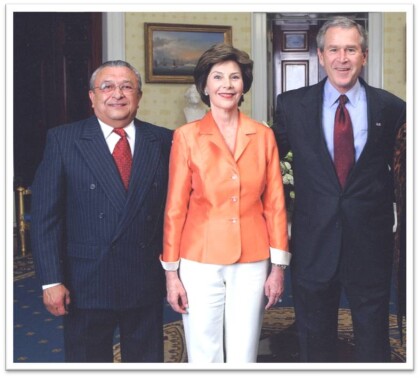Report this entry
More from the same community-collection
ALONG THE RIO GRANDE IN THE BIG BEND AREA
ON THE US-MEXICAN BORDER IN THE BIG BEND AREA LOOKING INTO ...
NATURAL WATER HOLES -HUECO TANKS
THESE NATURAL HOLES IN THE ROCK COLLECTED & KEPT WATER FOR LONG ...
Joe Gomez with President Bush and Laura Bush
White House dinner with the 1966 NCAA Basketball Champions Texas ...
Visiting guests arriving at Cattlemen's
Our daughter and her husband Doctors Tobery visit us from ...






























Comments
Add a comment